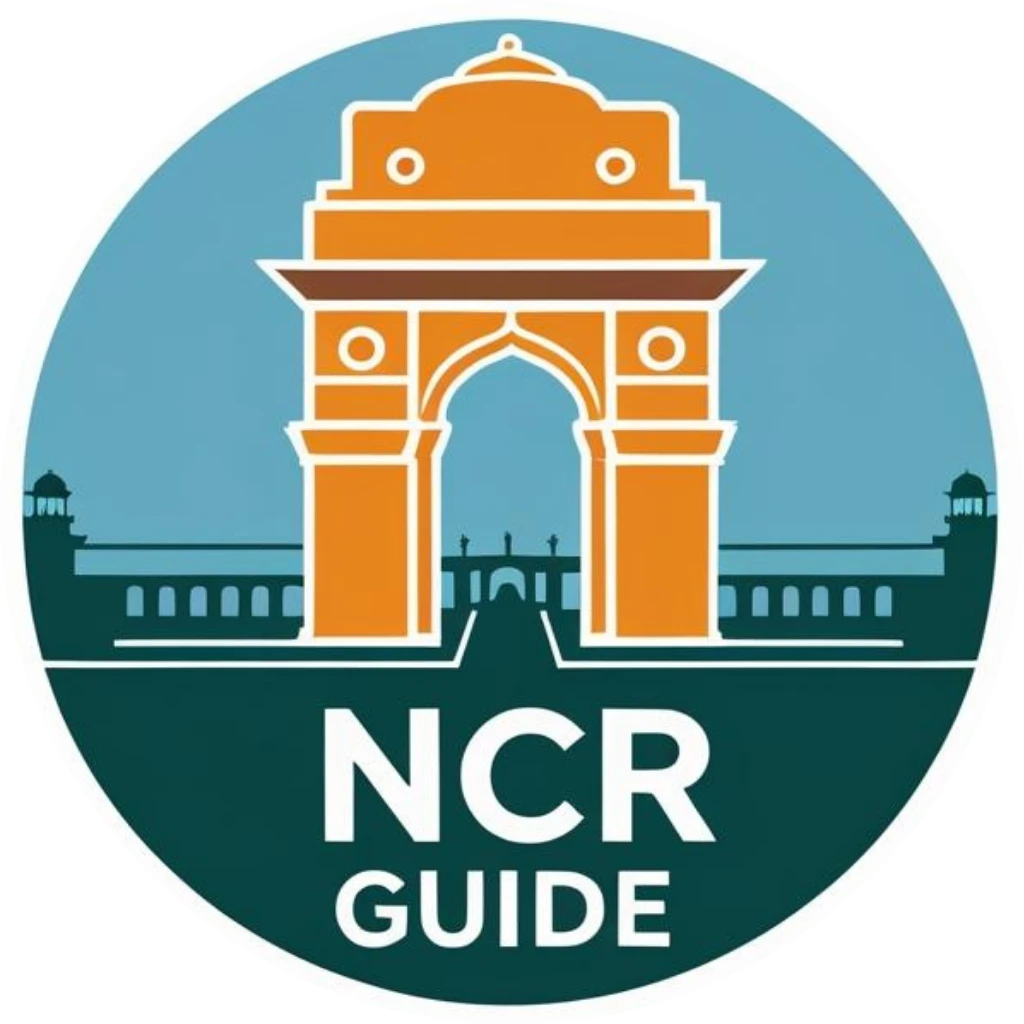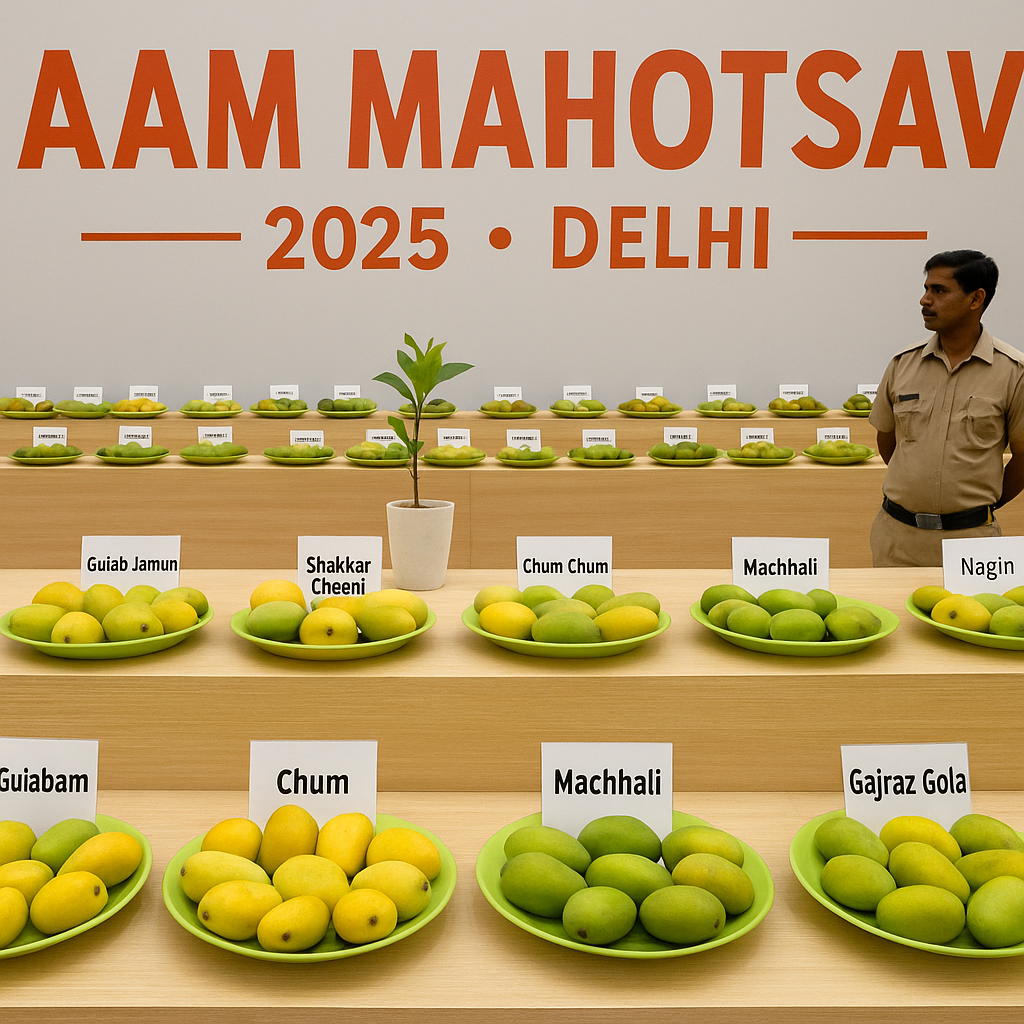The scent of ripe mangoes hung thick in the air at Thyagaraj Stadium last weekend as Delhi hosted the 34th Aam Mahotsav, a mango festival that was less an event and more a return to childhood for thousands of visitors. From June 27 to 29, 2025, over 400 mango varieties turned the stadium into a living, breathing tribute to India’s most loved fruit.
In a city gripped by heat and headlines, the festival offered a moment to slow down, bite into a slice of nostalgia, and remember how summer once tasted.
“We Didn’t Just Eat Mangoes. We Grew Up with Them.”
That’s how Delhi Chief Minister Rekha Gupta summed up the spirit of the event as she inaugurated the festival on Friday morning. She spoke of her grandmother’s village, of aamras served in steel bowls, of sticky fingers and smiling cousins.
“There was always a bucket of mangoes cooling in the well. You’d steal one, get caught, and still be handed another,” she smiled, adding, “This festival brings that warmth back to the city.”
It did. All of it.
Over 400 Varieties, and Each Tells a Story
From the poetic Gulab Khas to the eccentric Haathijhool, from the fragrant Shakkar Cheeni to the vivid Chum Chum—the mangoes on display came from far beyond Delhi. Some looked like lychees, others resembled peaches or apples. And many, like Nagin, Machhali, and Gajraj Gola, were unheard of even to seasoned mango lovers.
Each mango was tagged with its name, origin, and in many cases, a story from the farmer who grew it. A small box of Mallika mangoes stood beside a placard that read: “These were my mother’s favorite. I grow them in her memory now.”
India’s Mango Map Comes Alive in the Capital
The event wasn’t just about fruit—it was about farmers. Growers from UP, Bihar, Maharashtra, Odisha, Punjab, Gujarat, and West Bengal brought their hand-nurtured harvests to the capital. They answered questions from curious children, explained grafting techniques, and offered visitors rare saplings to plant at home.
Delhi Tourism MD Niharika Rai said, “When we support these farmers, we aren’t just protecting biodiversity—we’re honoring a legacy of flavor passed down through generations.”
The Festival Was a Playground for the Young and the Restless
Every few minutes, cheers erupted from the mango-eating contest. Children painted mangoes on canvas while grandparents pointed out the varieties they hadn’t seen in decades. A bright yellow mascot danced through the crowd handing out smiles and stickers.
Families moved through:
- A mini mango orchard recreated inside the venue
- Stalls selling aam papad, pickles, and mango-infused skincare
- An open mic where visitors recited mango memories or mango-themed poetry
At one corner, a child whispered to his sister, “I found one that tastes like strawberry!”
Sweetness With a Purpos
Behind the sweetness was a serious mission—protecting India’s vanishing mango varieties. While hybrid and commercial types flood the markets, native varieties are often left behind. Aam Mahotsav gave them a voice.
Visitors weren’t just eating—they were learning. About soil. About climate. About the difference between a mango picked green and one allowed to ripen on the tree.
And most importantly, they were remembering.
“Every Mango Has a Name, a Home, and a Memory.”
That’s how one farmer from Malda described his stall. And that’s what the Mango Festival gave Delhi—a chance to feel connected. To the fruit, the farmers, the land, and each other.
Because sometimes, all it takes is a slice of mango to remind us of who we are.
Frequently Asked Questions about Delhi’s Mango Festival 2025
When and where was the Mango Festival held in 2025?
The 34th Mango Festival took place from June 27 to 29, 2025, at Thyagaraj Stadium in Delhi.
How many mango varieties were showcased?
Over 400 varieties of mangoes were on display, including rare types like Gulab Jamun, Machhali, Haathijhool, and Shakkar Cheeni.
Who organized the event?
The event was organized by Delhi Tourism, with participation from mango growers across seven states, including Uttar Pradesh, Bihar, Maharashtra, Punjab, Gujarat, Odisha, and West Bengal.
Was the event free to attend?
Yes, entry to the festival was free, and free shuttle service was provided from INA Metro Station for visitor convenience.
What activities were available for visitors?
The event included a mango orchard display, food stalls, cultural performances, eating contests, quiz competitions, interactive sessions with farmers, and a festival mascot for kids.
Can visitors buy mangoes at the festival?
Yes, many of the farmers offered fresh mangoes, saplings, pickles, jams, chutneys, and other mango-based products for sale.
What was the purpose of the festival?
Apart from celebration, the event aimed to promote biodiversity, support small and regional mango growers, and create awareness about rare and native mango varieties that are often lost in commercial markets.
You might be interested in reading

